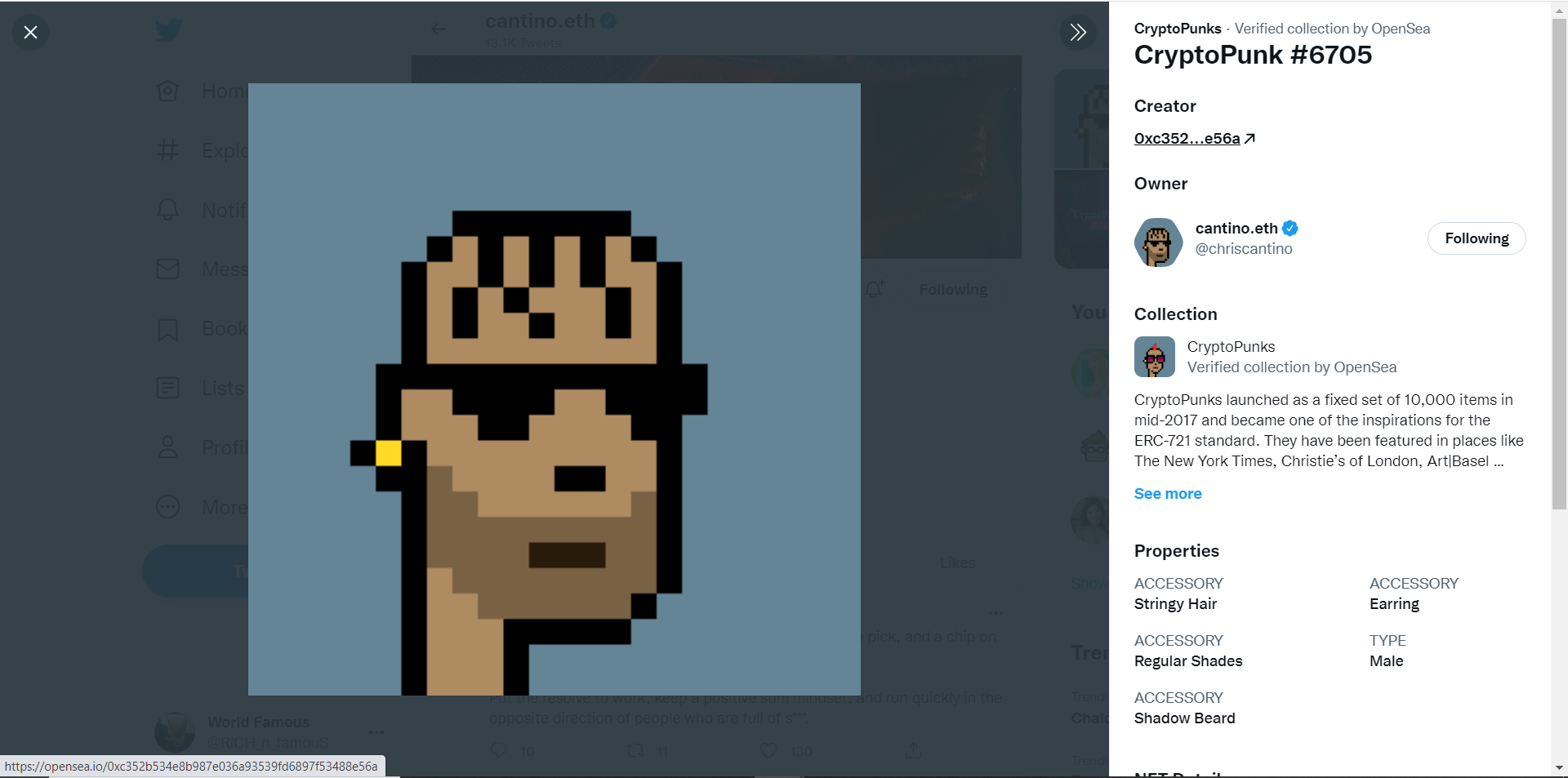HOW TO SET UP YOUR NFT PROFILE PICTURE (PFP)
1. Sign in to your Twitter account. 2. Ensure you have subscribed to Twitter Blue. 3. Locate your profile and click on “Edit profile.” 4. Tap on the profile picture icon and select Choose NFT. 5. Select your wallet service provider. 6. Connect your wallet...

Non-fungible Tokens (NFTs) break ground in crypto/blockchain technology, leading many companies to integrate this technology with their services. Twitter is one such company that allows users to show off their NFT communities by setting NFT as their profile photos, so anybody who views that profile can easily tell which NFT community the profile owner belongs to.
What is an NFT PFP?
NFT profile pictures (PFPs) are regular profile photos that can be set by temporarily connecting your wallet to your social media account, where you can select any of your NFTs to serve as your profile picture. Hence, anyone who clicks on your profile can verify that you genuinely own the NFT by confirming it on the marketplace or blockchain.
Why can’t I directly upload the NFT?
Of course, you can; however, anybody else can simply upload a copy of the image as their profile picture. Hence, if you really want to flex your NFT community via social media, you have to do it in such a way that any random visitor who visits your page can identify that you truly own a piece of a collection.
A brief history of NFT PFPs
NFT profile pictures weren’t a thing until 2021; before then, high-value NFT community members like the CryptoPunks or Bored Ape Yacht Club (BAYC) manually uploaded their NFTs as a profile picture to show allegiance to a community, promote the popularity, and serve as a flex for social media. Humans love exclusivity and how it distinguishes them from the crowd, and these NFT profile pictures helped get that swagger. However, this method wasn’t entirely effective, as any imposter could act like a community member by uploading a copy of the NFT as their profile picture; hence, Twitter released the NFT PFP feature that allows everyone to identify with an authentic NFT piece.
Setting up your NFT PFP on Twitter
Last year, before Twitter enabled NFT PFPs, they released a paid-subscription service – “Twitter Blue”- allowing users access to premium and beta (unreleased) features. This subscription costs $3 monthly and is available to users from the United States, Canada, Australia, and New Zealand.
To use your NFT as a profile picture on Twitter, please follow the steps below:
- Sign in to your Twitter account.
- Ensure you have subscribed to Twitter Blue.
- Locate your profile and click on “Edit profile.”
- Tap on the profile picture icon and select Choose NFT.
- Select your wallet service provider.
- Connect your wallet, and digitally sign the transaction to permit twitter the rights to feature your NFT.
- Select your preferred NFT, and save your changes
Then, your newly selected NFT will be displayed in a hexagonal shape (unlike other users with a squared-shaped profile picture). Then, anyone who clicks on your profile picture can see necessary public details of your NFT at a glance.

Benefits of NFT PFPs
Social Flex
As said earlier, humans love exclusivity; we love to show off our uniqueness, which is why high-value luxury brands exist. Of course, Mercedes of BMW are great cars that aren’t cheap; however, a Lamborghini or a Rolls Royce is way more expensive because they signify a top level of exclusivity. Similarly, NFT PFPs can help show the status levels of social media users, helping them stand out among others. For example, the cheapest CryptoPunks NFT costs hundreds of thousands of dollars; hence, a holder showing off his item is seen as a respectable and reputable member of the NFT community.
Marketing
NFT PFPs can help a crypto project stay on the lips of people. Many early adopters of groundbreaking NFT projects have become a colossal social media influence; hence, people follow them and trust their opinions. Therefore, seeing a particular project on the profile of a trusted personality can influence neutral followers towards a project, thereby serving as a marketing tool.
Community Engagement
The NFT community is extensive, consisting of several people discussing new and existing projects, talking about trading, minting, and other meaningful, engaging topics about NFTs. NFT profile pictures help maintain a healthy engagement level by attracting many people.
For example, if you click on a person’s NFT PFP and are redirected to the collection on Opensea, you will see a whole lot of new information about the collection, which in turn could be a huge talking point in social communities; hence, facilitating optimal engagement.
Final Takeaway
Currently, there are a few restrictions on using NFT PFPs, and they aren’t supported on many social platforms yet; even on Twitter, the feature isn’t available for all. Regardless, NFT PFPs are poised to become common in the coming years, such that every user across all social media platforms will have their unique identities tied to their social profiles, so watch out.
For more insights on Non-fungible tokens, kindly read our NFT articles on the CCTIP blog. Also, follow our social media communities: